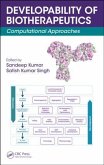A large variety of organisms - from bacteria to man - form minerals. Skeletons, teeth, spicules, spines, shells, darts, and granules are all mineral-containing tissues. Why, where, and how these minerals form are the central questions addressed in this book. These questions have become important in many fields. Preserved fossils are used to interpret ancient climates, changes in chemical composition of the oceans, or to date geological and archaeological deposits and artefacts. Materials scientists investigate mineralized tissues to try to determine the design principles used by organisms to form strong materials, and many medical problems are associated with normal and pathological mineralization. Heinz Lowenstam, the pioneering researcher in biomineralization, and his former student Stephen Weiner discuss the basic principles of mineral formation by organisms, and compare the various mineralization processes. Reference tables list all known cases in which organisms form minerals.
Focusing on the basic principles of mineral formation by organisms, this comprehensive volume explores questions that relate to a wide variety of fields, from biology and biochemistry, to paleontology, geology, and medical research. Preserved fossils are used to date geological deposits and archaeological artifacts. Materials scientists investigate mineralized tissues to determine the design principles used by organisms to form strong materials. Many medical problems are also associated with normal and pathological mineralization. Lowenstam, the pioneer researcher in biomineralization, and Weiner discuss the basic principles of mineral formation by organisms and compare various mineralization processes. Reference tables listing all known cases in which organisms form minerals are included.
Focusing on the basic principles of mineral formation by organisms, this comprehensive volume explores questions that relate to a wide variety of fields, from biology and biochemistry, to paleontology, geology, and medical research. Preserved fossils are used to date geological deposits and archaeological artifacts. Materials scientists investigate mineralized tissues to determine the design principles used by organisms to form strong materials. Many medical problems are also associated with normal and pathological mineralization. Lowenstam, the pioneer researcher in biomineralization, and Weiner discuss the basic principles of mineral formation by organisms and compare various mineralization processes. Reference tables listing all known cases in which organisms form minerals are included.








